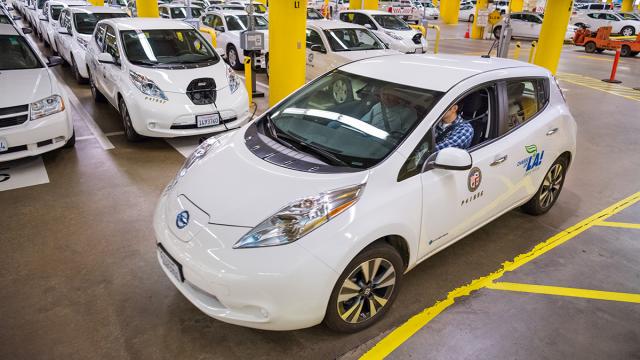Fleets around the country are starting to convert to electric vehicles (EVs), including big names like UPS, FedEx and Amazon. But is it the right fit for your business? It'll depend on what your goals are (lower costs, sustainability) and what type of fleet you operate. In general, fleets with the following characteristics are good candidates:
•Vehicles that return to and remain at the same location with enough time to recharge their battery
•Travel distance of 10,000 to 15,000 miles per year, which can achieve cost parity with traditional fuels
•Encounters stop-and-go traffic, which allows taking advantage of regenerative braking
•Miles driven per day doesn't exceed the vehicle range (longer-range vehicles are in the works)
Some fleet managers are buying commercial EVs for specific uses, rather than replacing all of their conventional vehicles. The top two reasons for most large businesses are sustainability and environmental goals (83%) and lower total cost of ownership (64%), according to a UPS/GreenBiz survey.
What are the Benefits?
The primary benefits come from lower operating and fuel costs. Maintenance costs are lower because electric vehicles have fewer moving parts. The need for oil changes and spark plug and air filter replacements are eliminated. There are also no more concerns about mufflers or catalytic converters needing repairs.
New York City's maintenance costs for its EVs in comparison to gasoline-powered vehicles showed all-electric vehicles had the lowest-recorded maintenance costs, significantly less than gasoline, hybrid or hybrid-plug-in models. For instance, the annual maintenance cost for a Ford Focus Electric passenger car was only $386, compared to its gasoline counterpart at $1,805.
Such savings can help compensate for the higher purchase price of electric vehicles. However, as manufacturers add more affordable models to the market, prices continue to come down. Some EV manufacturers already claim that their price is comparable to a conventional vehicle.
The benefits go beyond reducing emissions and saving on operating costs:
•Better air quality. Pedestrians no longer have to breathe fumes next to idling vehicles.
•Quieter operation, reducing noise for both drivers and residents.
•Improved safety. Features help drivers stay in their lane or see obstacles in a blind spot.
•Retain or attract new drivers. Yellow Cab in Columbus, Ohio, attracted drivers from Uber and Lyft by offering the comfort of electric vehicles.
The vehicles are also smarter and gather more data, helping make routes more efficient.
Selecting the Right Charging Stations
Choosing how you charge your EVs will vary depending on the type of EV you purchase. Once you determine which EVs make the most sense for your use, you’ll want to consider the vehicle’s range, daily energy needs for each EV, and how much time you have available to charge your EV. Other key factors to consider are charger output, charger level/power, charger type, and connector compatibility.
Before you begin installing charging stations, you will also want to take into account:
•Future-proof design ― If you’re planning your fleet electrification through a phased process, ask your contractor about service upgrade options that account for your ultimate needs. This will help you add more charging stations in the future in a cost-effective manner.
•Load/Demand Management Equipment ― Load management may help decrease your overall energy costs and avoid major service upgrades. Discuss your options with your electrical contractor and electric vehicle service provided.
Rebates and Incentives
Our Commercial EV Charging Station Rebate Program offers rebates to help offset the cost of installing commercial charging equipment, including:
•Level 2 charging station rebates to charge light-duty EVs of up to $5,000 per charging station if deployed in a Disadvantaged Community. Otherwise, up to $4,000 is available per charging station.
•DC fast charger rebates to charge light-duty EVs of up to $75,000 per charging station depending on power output.
•Charging station rebates to charge medium- and heavy-duty EVs of up to $125,000 per charging station depending on power output and charger type.
Incentives and various funding opportunities also are available from federal, state, and local authorities for transitioning to electric vehicles, and can help lower upfront costs. Check out these resources to help kickstart your transition to electric vehicles:
•Federal Tax Credits for New All-Electric and Plug-in Hybrid Vehicles:
https://www.fueleconomy.gov/feg/taxevb.shtml
•California Governor’s Office of Business and Economic Development ZEV Funding Resources:
https://business.ca.gov/industries/zero-emission-vehicles/zev-funding-resources/
•CALSTART Funding Finder:
https://fundingfindertool.org/
For more information about fleet electrification and EV charging, contact your account advisor or visit our website at ladwp.com/ev.
August 2022 Connections Newsletter
From industry trends and best practices to sustainability initiatives, our monthly Connections Newsletter provides valuable insights, updates, and resources to support our large business customers.
Full Newsletter